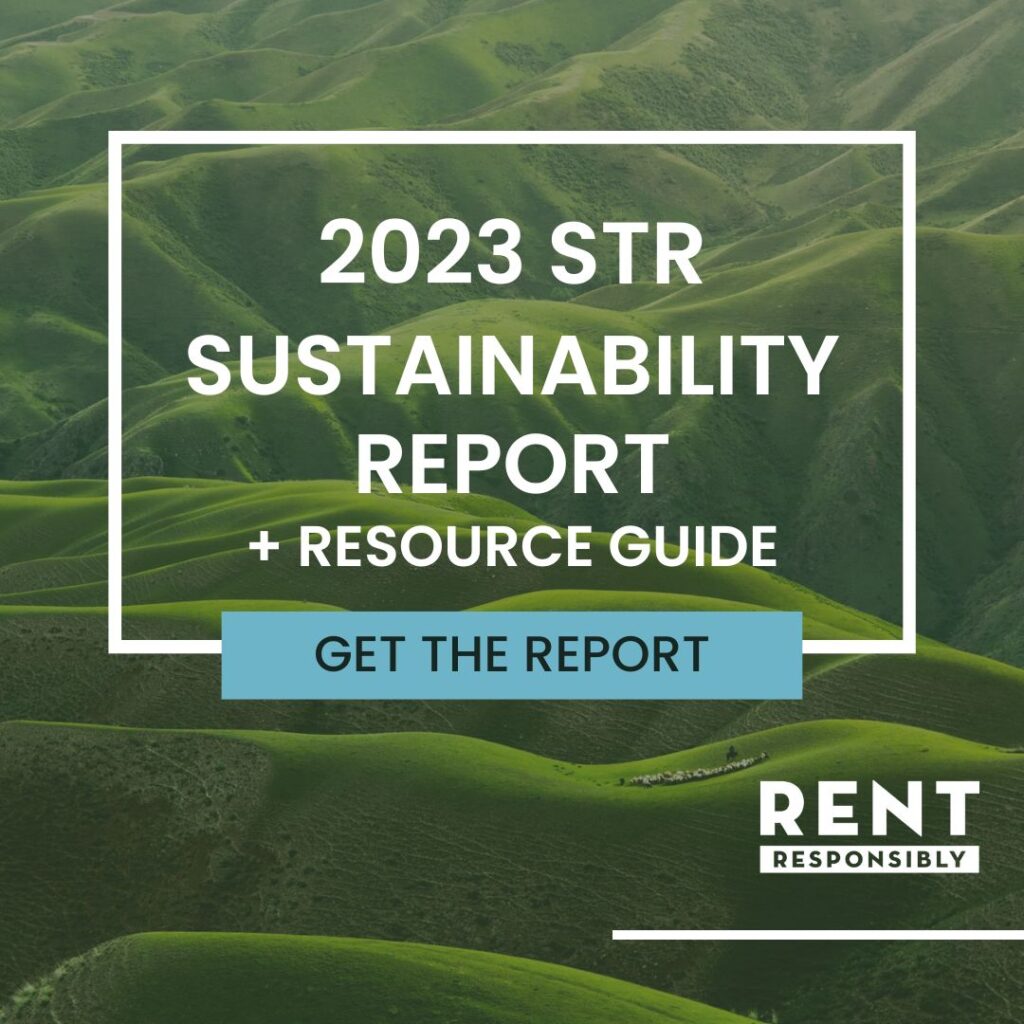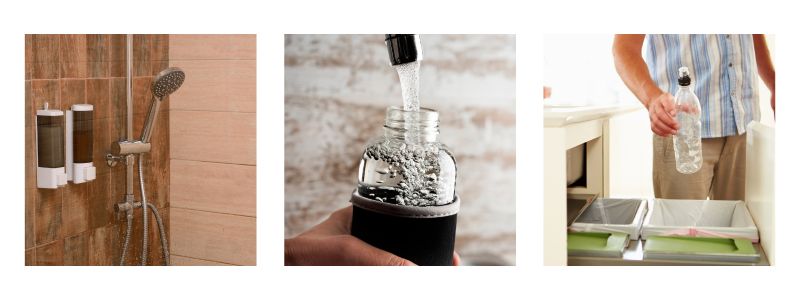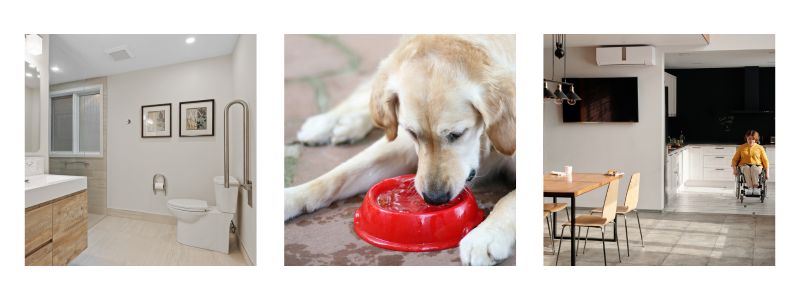Updated on September 26, 2023
Responsible design is critical for any vacation rental business that wants to keep up in a competitive market and level up guest experiences.
Forrester Research, a global market research firm, has defined responsible design as creating an experience with the intent of doing good and avoiding harm to all stakeholders.
The concept is taking a foothold in every industry including vacation rentals. During the first Vacation Rental Design Summit in April 2023, responsible design was the topic of one of the panels, called Design Responsibly.
Responsible design embeds accessibility, inclusivity, safety, and environmental sustainability into the physical design of the property and into the guest’s experience while staying there. It helps to boost your revenue, trim costs, and build trust with guests and your community. And all of those benefits equal greater competitiveness in the marketplace.
Moderated by Alexa Nota, chief operating officer of Rent Responsibly, panelists offered specific ideas for how you can incorporate responsible practices through smart vacation rental interior design.
Vacation Rental Sustainability Statistics

About 85% of travelers want to stay in sustainable accommodations, according to a 2021 survey by Booking.com, and nearly three-quarters of hosts already have sustainable features or practices in place at their properties to appeal to them. Short-term rental operators not yet employing sustainability practices and features are behind the competition.
Hosts who offer sustainable practices at their short-term rental will have a competitive advantage and be able to charge a higher average daily rate. Sustainable practices and features can also enable cost savings. About 59% of hosts report cost savings from their sustainable practices, according to the Booking.com survey.
Learn More: Download the 2023 STR Sustainability Report
Sustainability Tips for Vacation Rental Interior Design
Sustainable design can start at the time of construction or renovation or later after a home is already built.
When constructing or renovating your property, pick a high resistance value (R-value) insulation and fill in any cracks in the walls with caulking before adding the insulation, advised Elizabeth Scruggs, a contractor and designer in Lebanon, Tennessee, during the Design Responsibly panel.
She also suggested double-pane or triple-pane windows with low emissivity (low-E) glass, which has a microscopically thin coating of metal oxide on one of the internal glass surfaces that reflects heat back inside but still lets light filter into the room, according to the Energy Saving Trust.
To save water, install low-flow faucets, showerheads, and toilets.
READ MORE: 9 ways to make your short-term rental more sustainable
If you’re past the construction or renovation stage, adding recycling receptacles, water-filling stations, or shampoo and conditioner dispensers to the property are easy ways to incorporate sustainability into your design.

Speaking on the Design Responsibly panel at the summit, Rina Norwood, a vacation rental designer and host, said many of her guests at her cabin in Nashville come from Europe where recycling is the norm. Rina explains in the checkout list how to separate recyclables and where to place the recyclables on the property.
Her cabin also has a fresh spring water well, and she lets guests know they can refill water bottles as much as they want.
Another way to reduce single-use plastics is by buying shampoo and conditioner in bulk, and adding dispensers in the bathroom, said panelist Jen Sexton, short-term rental designer at Host GPO and a host.
However, hosts and property managers shouldn’t assume that guests know what to do when it comes to sustainability, said Tyann Marcink, queen of guest experience at Touch Stay and a short-term rental host who also spoke on the panel.
Communicate sustainability features in your listing. In your guest guide, repeat where guests can find those sustainability features and how to use them, and finally, put instructions inside the property itself.
“There are different ways you can communicate those things, and if you don’t, it’s not going to happen,” she said.
READ MORE: Marc Ribail: Transforming vacation rentals, the guest experience, and the planet
Accessibility in Travel Statistics
About 26% of adults (61 million) in the U.S. live with some type of disability. By 2034, there will be 77 million people who are 65 years old and older, compared with 76.5 million under the age of 18 – the first time in history seniors will outnumber children, according to Census.gov.
Many STR owners purchase their property as their future retirement home or to care for aging relatives so making the home accessible helps not only your guests but potentially the future you.
Travelers with disabilities have the desire to travel more and do travel more than any underrepresented group, yet have the worst experiences doing so, according to a 2021 survey by Expedia Group. As a result, catering to varying disability needs will make your properties a hot commodity to a huge and largely untapped market.
Interior design tips for making your vacation rental more accessible
When thinking about making your vacation rental accessible, think beyond guests who use wheelchairs, said Lorraine Woodward, founder of Becoming rentABLE, a platform for accessible vacation rentals.
Disabilities cover a range of conditions from vision and hearing impairments to being on the autism spectrum, so you can make your property accessible without catering to every kind of disability. This is important to remember because some homeowners might associate accessibility with high-ticket modifications like elevators and pool lifts. In fact, you can make some simple changes to make your property more accessible.
If your home is under construction, you can easily incorporate accessibility features without excessive expense. Choose 36-inch or wider doorways instead of 32 inches so that a wheelchair can comfortably navigate through the space.
“You’re going to know that I went through a 32-inch door because I’m going to leave some skid marks,” quipped Lorraine, who uses a wheelchair. “I prefer the 36-inch or wider doors.”
A zero-threshold or low threshold in doorways and in transitions between tile and carpet are optimal for wheelchairs and also reduce tripping hazards.
When choosing kitchen cabinets, add toe kicks so that people in wheelchairs can open them.
Higher toilets, measuring 17-19 inches tall, are easier for people with mobility limitations to use. Inside showers, add grab bars, safety rails, and shower seats.
If there’s space, install a driveway that would accommodate a van and a wheelchair lift.
If your property was already built or renovated, there are things you can do in retrospect to make it more accessible. Change out traditional door knobs with lever handles, which are easier to open for people in wheelchairs or those with arthritis.

Allow adequate floor space to move around furniture and counters. Post Braille labels on items that guests need to find. You also can add amenities for service dogs like water and food bowls and instructions on where to take the dog to relieve itself.
Rina recommends adding multipurpose furniture to vacation rentals to accommodate different needs. Nesting tables are particularly handy because they can be moved around the room.
READ MORE: How Lorraine Woodward made a platform for accessible vacation rentals
Vacation rental inclusivity and safety by the numbers
Minorities, solo travelers, and women may have special concerns about safety, and safety is an extension of inclusivity. Think about them interchangeably, Alexa said.
Active inclusivity can open up your property to high-value guests like LGBTQ+ travelers and people of color.
LGBTQ+ travel is a $218 billion travel niche, one that is resilient to major disruptions and loyal to supportive brands, according to a 2021 survey by Expedia Group, and about 60% of these travelers identify safety as a very important factor.
Meanwhile, Black travelers spent about $109 billion on travel in the U.S. in 2019, according to MMGY Global. Yet, 42% of black travelers feel unwelcome at their destination, according to the National Coalition of Black Meeting Professionals.
READ MORE: Lawrence Phillips: Making Black travel safer and unapologetic with Green Book Global
Nearly two-thirds of all travelers were more likely to book with providers with inclusive practices, according to the 2021 Expedia Group survey.
Consider women and solo travelers, too. About 89% of women routinely take extreme safety precautions when they travel, and more than 50% of women were more likely to stay in a woman-owned vacation rental, according to Wakefield Research/Golightly.
Furthermore, solo travel increased by 33% last year on Airbnb.
Making your vacation rental safer and more inclusive
Some basic safety features include well-lit pathways, exterior security cameras, tamper-free locks on doors and windows, and making sure emergency contact information is easily visible.
READ MORE: Can vacation rentals have cameras? Security, compliance, and privacy considerations
In making all groups feel welcome, it’s important to leave out religious decor and other items that might inadvertently make someone uncomfortable. For example, if you are hosting a family with kids, you might want to remove paintings depicting nudity, Rina said.
Another thing to keep in mind is stocking your vacation rental with amenities that make travelers with specific needs feel more at home, such as menstrual products and hair care products for different hair types, including Black hair. Products with argan oil are great for coarse hair and also great moisturizers for other demographics.
“My friend who is Asian said, anytime I go to a short-term rental and they have chopsticks, it gives me this warm fuzzy feeling inside,” said Jen. “That may only happen two times a year, but you are creating an experience. Think about how easy it is to include some chopsticks in your utensil drawer.”
In addition, opt for furniture, fixtures, and decor that are diverse and representative of different cultures, genders, and identities.
Don’t Forget: Market your responsible interior design features!
If you have any of the above features, remember to market them clearly in your short-term rental listings. Detail all applicable specific features and amenities, even those you might think guests will expect as standard. Have a blender in the kitchen? Add that to your amenities list. It might make or break the stay for someone with dentures or someone staying in your home for a medical procedure, Lorraine said.
And don’t forget safety features and a statement about inclusivity and non-descrimination. As the stats throughout this article show, millions of travelers are looking for short-term rentals, and responsible design can inspire them to book yours.
WATCH NOW: Stories of Inclusive Hospitality
…
GET UPDATES

